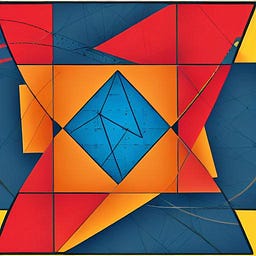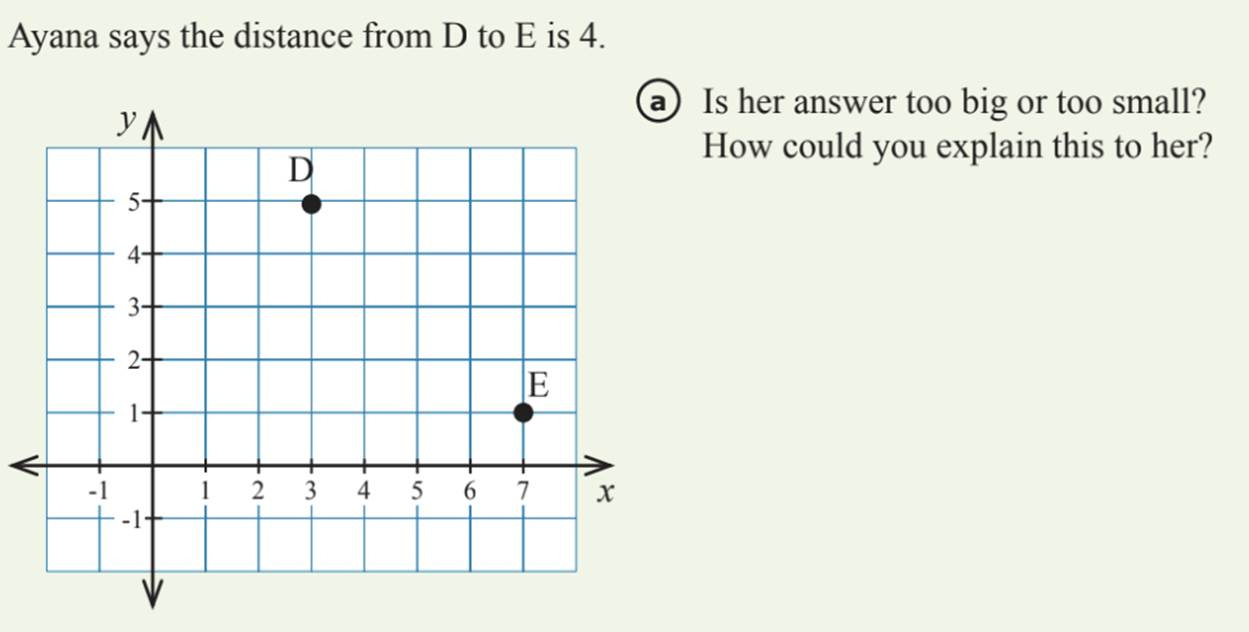Here's something that happens to me all the time: a student can solve a problem one day. The next day, or a few days later, I give them a different problem on the same topic and they don't know what to do. What happened? Why didn't the learning stick?
Forgetting is maybe the most ubiquitous experience in education. Teachers teach, sometimes students learn and sometimes they don’t. Learning is a bit mysterious. There's no magic formula to make sure students remember everything they learn. Still, I think it's helpful to lay out a few things that improve long-term retention.
One common reason why learning doesn’t stick is that students don’t practice enough. That’s certainly often the case. Practice will be one idea I talk about below. But I worry that “students need more practice to remember things” becomes a narrow and limiting mental model. It’s easy to end up in a trap where everything is about practice, and the only response to students struggling is asking them to practice more. It’s also easy to give students repetitive, poorly designed practice that doesn’t help much. That’s the brute force approach to memory, and while practice is important it needs to be paired with a few other elements so that learning lasts.
Thinking
I realized recently that I didn't know how many steps there are going up to my front door. It could be 2, or 3, or 4, or 5. I can picture the front of my house, I can imagine myself walking up those steps, but I couldn't tell you how many there are. I've walked into my house thousands of times. But I don't typically think about the number of steps, so I don't remember it.
There's a difference between doing something and learning from it. The key question to ask in school is, "what are students thinking about?" Students could solve a hundred problems about finding circumference but learn nothing. If the whole time they're just thinking "I answer these problems by multiplying the number in the problem by 3.14," that practice won't do any good because they aren’t thinking about circumference. Just as I walk into my house every day without thinking about how many steps there are, many students go through the motions without thinking about the mathematical ideas we want them to learn.
Here are a few things to consider about thinking:
Students learn what they think about. As often as possible I want students thinking "circumference is equal to pi times diameter" and not just thinking “multiply by 3.14.”
Students should be thinking about the deep structure of the concept as often as possible. Circumference isn't just pi times diameter, it's also 2 times the radius times pi, and circumference divided by pi is diameter, and circumference is proportional to diameter. All of those ideas form one connected network rather than a single procedure. I want students thinking about the connections in that network.
Don’t overload students. Our working memories are limited. If we ask students to think about too many different things at once, their working memories become overwhelmed and they won’t learn much at all. Focus on one thing at a time. This also means students need fluency with all the little pieces of a bigger problem, so those little pieces don’t take up space in working memory that should be dedicated to learning new ideas.
All the above assumes students have the bandwidth to be thinking about math. If they're feeling anxious or distracted by a Snapchat they just got or preoccupied by something happening outside school or the room is chaotic, they are less likely to be thinking about math. We should try to eliminate those distractions as often as we can.
Connect to What Students Already Know
Teaching students to combine like terms can be rough. Some students seem to get it right away, and others are perpetually confused. They’ll tell me 2x + 3x = 5, and just as they figure out that it’s 5x I ask them 8x - 4x and they tell me 4 — they’re supposed to subtract the x’s, right? And then we get to 8x - x, and that one is definitely 8, right? And 2x + 5 + 4x is a complete disaster. I eventually stumbled across a really nice metaphor. We start with m’s. M stands for a million. What’s 2m + 3m? Well 2 million + 3 million is 5 million. 8m - m is 7m, because 8 million - 1 million is 7 million. Then we expand out to billions, thousands, and ones. The key idea here is to take what we’re learning, and connect it to something students already understand. Learning sticks much more easily when students build connections between ideas and link new learning to prior knowledge.
This applies to all sorts of topics. We learn new things in relation to what we already know. Division is easier to learn if you have a solid grasp on multiplication. Proportions are easier to learn if you build on intuition for everyday proportional relationships like cost and speed. Operations with negatives build on familiar rules with positive numbers.
Here are a few specific ways to do this:
Make sure students have the prior knowledge to build on. Check to make sure students have the prerequisites they need, and reteach if they don’t.
Before introducing a new idea, ask a bunch of review questions on related ideas to get that prior knowledge fresh in students’ minds. This isn’t random review, and it isn’t necessarily what the class learned yesterday — the goal is to tee up the connections we want students to make.
Make the connections between new ideas and prior knowledge clear. Get students thinking about the ways that new learning builds on what they already know. Ask students how ideas are connected. Don’t take those connections for granted.
Don’t just make the connection between new learning and prior knowledge once. Reiterate those connections multiple times, over multiple days.
Retrieval Practice
For a long time I couldn't remember the difference between affect and effect. Every so often I would need to use one of the words. I would look it up, use the right word, and move on with my life. A few weeks or months later I would need to use one of the words again, realize I'd forgotten, and look it up again. One reason the difference didn't stick is I was never retrieving what I knew from memory. Each time I was looking up the difference, rather than pulling it out of my memory. Retrieval is better for retention than rereading something or trying to learn it through pure repetition. I was looking up the difference between affect and effect, but never retrieving it. Eventually I got tired of forgetting and set some reminders to quiz myself about affect/effect every day or two. That retrieval helped, and now I don't need to look up the difference anymore!
I might have a really clever way to introduce solving equations, connecting it to what students already know and getting students thinking about the structure of equation-solving. All of that focuses on how the information enters the brain. If students never pull that information out, the learning won’t stick. That’s what retrieval practice is all about.
Here are a few things to consider when structuring retrieval practice:
Do it! For a long time I just didn’t make retrieval practice a priority. It doesn’t need to be a ton of practice every day, short chunks of regular retrieval can be really helpful.
Space it out. Retrieval practice should happen the day students learn something new, the next day, the next week, and the next month. If students forget, reduce the interval and start again.
Interleave. When different topics are interleaved together students need to figure out which ideas to retrieve, preventing them from going on autopilot.
Make sure students are actually retrieving. If you ask a question and students don’t remember it, that means they could use a quick reteach and then another round of retrieval soon.
Retrieve in a variety of ways. Ask different types of questions, and use different contexts.
Avoid preempting retrieval. If I want students to remember something they need to remember it themselves. Giving students too many hints to start practice or putting the steps on the board can short-circuit retrieval practice and hurt retention.
Transfer
Here’s a problem: a bat and a ball cost $1.10 together. The bat costs $1.00 more than the ball. How much does the ball cost? (Answer in footnote.)1 I have solved lots of math problems like this one, but I got this one wrong when I first saw it.
The problem above is designed to be tricky. I don’t feel too bad about getting it wrong. But that’s how students feel a lot of the time: they learn one thing, and as soon as they feel comfortable with it we start asking them in lots of different ways that seem designed to be confusing. A student can solve a Pythagorean Theorem problem when there’s just one triangle, but once we make the diagram more complex they get stuck. We don’t want students to only be able to solve problems when we ask them in predictable ways, we want them to be able to apply that knowledge in lots and lots of different contexts. This is the toughest part of learning. There are no shortcuts, there’s no magic sauce that will help me see forks in chess games or help students realize that a word problem can be solved with a system of equations. It’s a slow, gradual process of practicing skills in new contexts and thinking about the deep structure of a mathematical concept.
Here are a few ideas:
Use lots of examples and non-examples. Explanations are overrated. Students learn best when they see a lot of examples of how an idea applies and think about what those examples have in common. Students also need non-examples to understand where an idea doesn’t apply.
Variety is key. Start with more predictable question types to help students gain confidence, but as soon as they’re ready for it ask questions in different ways and in different contexts.
Focus on the deep structure. If you want students to apply systems of equations to lots of different situations, get students thinking about the deep structure of a system of equations: two or more different constraints that can be represented as equations. Focusing on that deep structure makes it more likely students can apply their learning in the future.
Avoid too much repetitive practice. Repetition is helpful early on in the learning process, but as soon as students are ready for it practice should be varied and interleave different topics.
Be patient. Transfer is hard. Don’t give up, keep trying.
Final Thought
There’s no flowchart to figure out which of these four ideas is the cause of a particular student forgetting. And I have a class full of students who are probably forgetting for different reasons. Still, with every topic I teach, I can point to places where I can improve. I’m not a perfect teacher. When students aren’t remembering something I want them to remember, I use these four ideas as a place to start. I can always find something to tweak that will help students remember.
That’s the heart of this post. Forgetting and remembering aren’t random. They’re complex, and it’s never a sure thing. But there’s always something I can improve. If students aren’t remembering, it’s my job as the teacher to make a change. Get students thinking about meaning. Prompt connections to prior knowledge. Design effective retrieval practice. Ask students to apply what they know many different ways. Teaching doesn’t do much good if students don’t remember what they learn.
The ball costs $0.05 (and the bat costs $1.05, for a total of $1.10). $0.10 doesn’t work, because the bat would cost $1.10 and the total would be $1.20. Careful trial and error works for this problem, but you can also set up a system of equations and solve if you like:

























